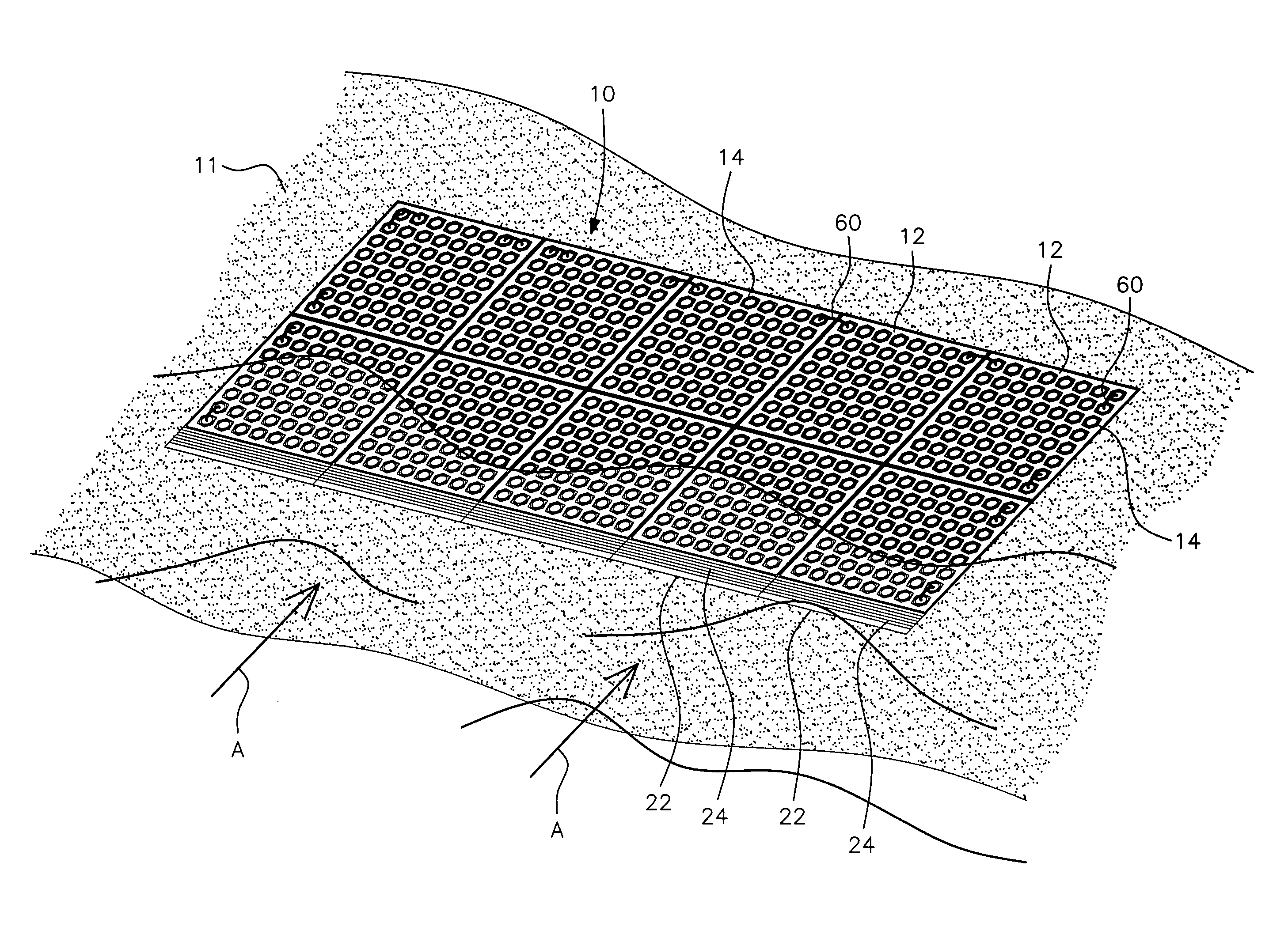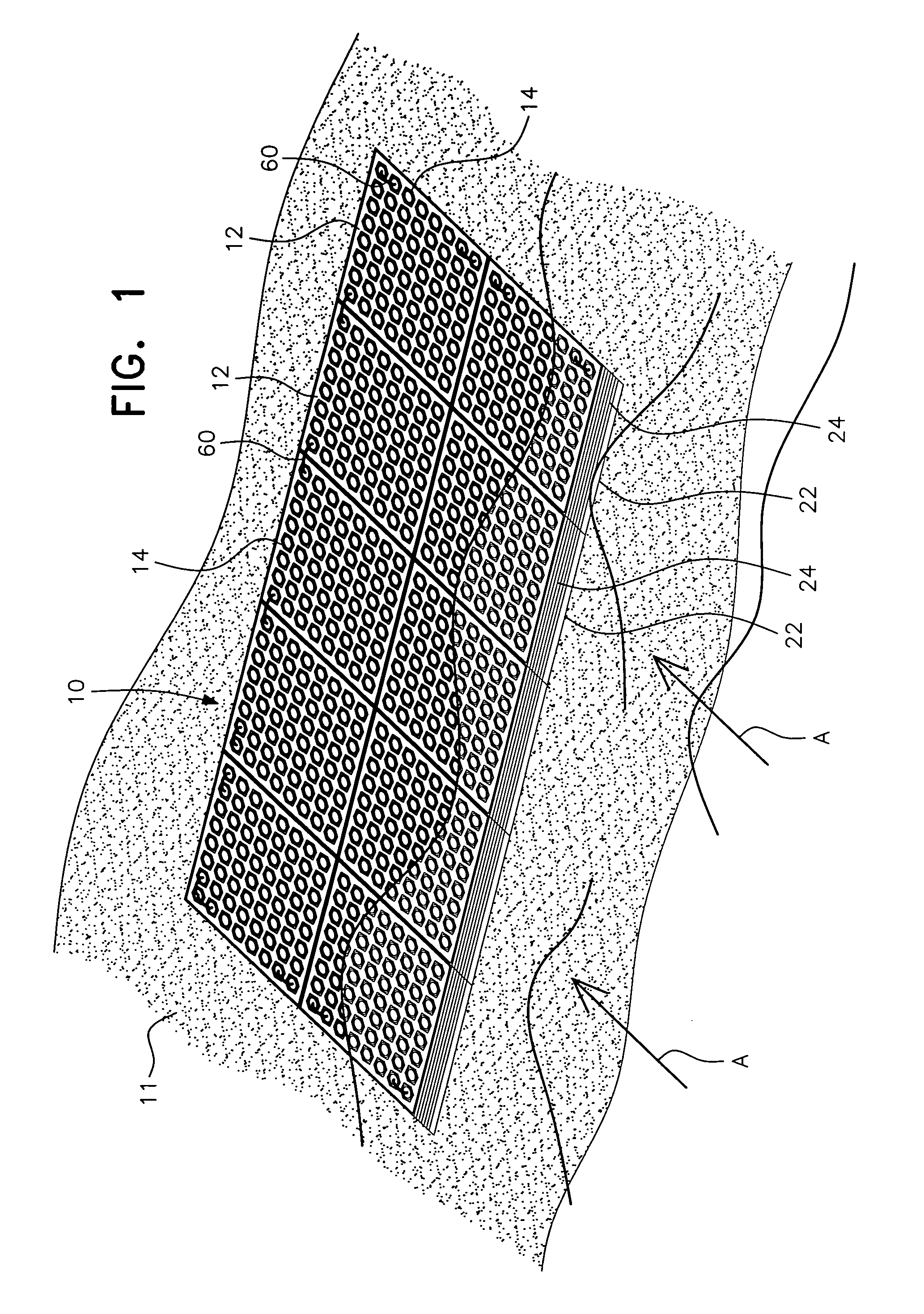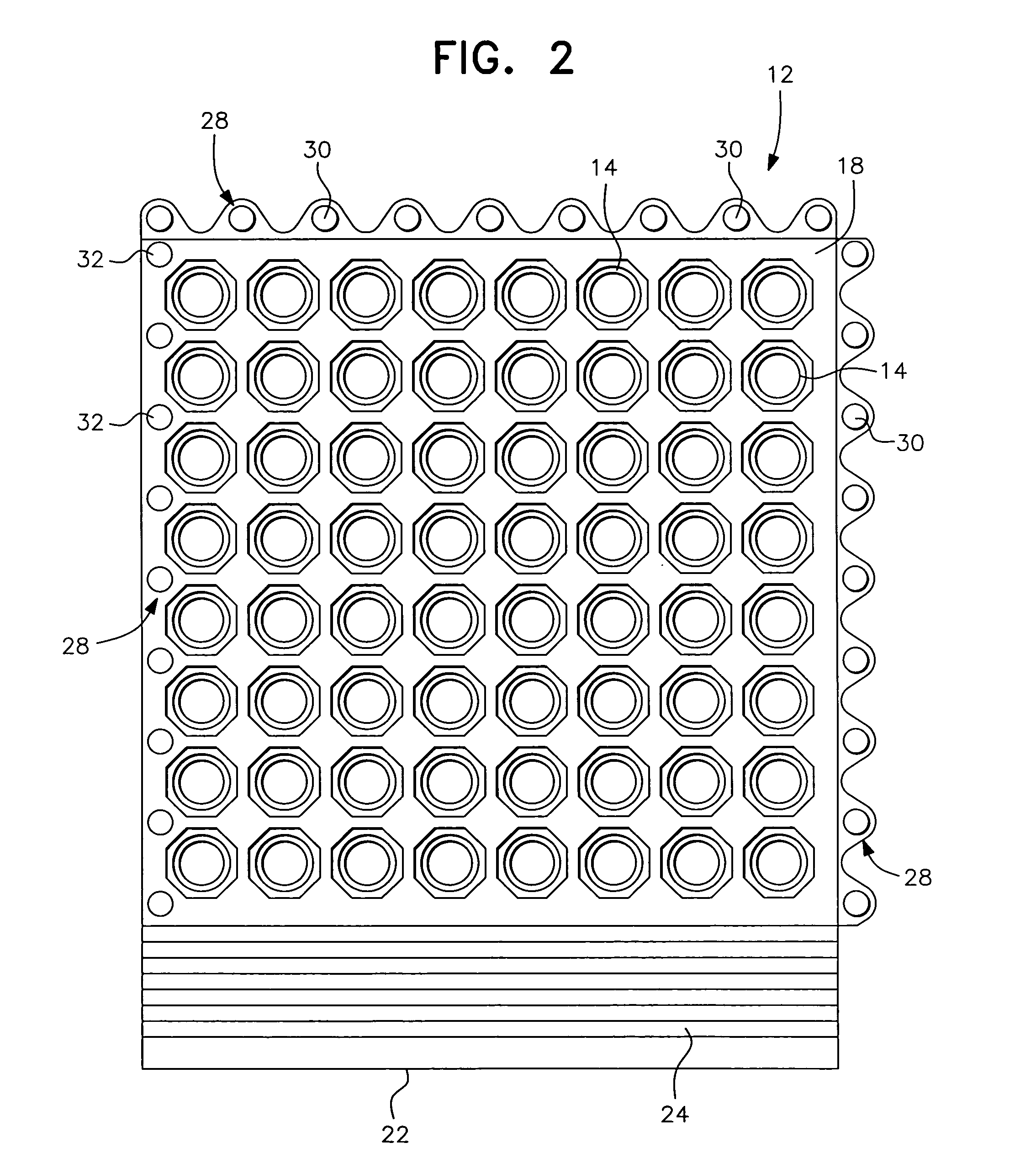Erosion control ballast and soil confinement mat
a technology of soil confinement and erosion control, which is applied in the field of erosion control, can solve the problems of inability to closely conform with the underlying soil, inability to prevent inability to interact with the mat of the '438 patent, etc., and achieves the effects of preventing horizontal shifting of underlying materials, high traction surface, and not damage to boats
- Summary
- Abstract
- Description
- Claims
- Application Information
AI Technical Summary
Benefits of technology
Problems solved by technology
Method used
Image
Examples
Embodiment Construction
[0044]In describing a preferred embodiment of the invention illustrated in the drawings, specific terminology will be resorted to for the sake of clarity. However, the invention is not intended to be limited to the specific terms so selected, and it is to be understood that each specific term includes all technical equivalents which operate in a similar manner to accomplish a similar purpose.
[0045]As shown in FIGS. 1-4, the present invention is directed to an erosion control ballast and soil confinement mat generally designated by reference numeral 10, placed on a soil area 11, subject to water flow indicated by arrows A. The mat 10 is made of a non-buoyant, relatively heavy and substantially flexible material such as rubber (natural, synthetic, recycled), fabric encapsulated clay or concrete, PVC, or other form of dense natural or synthetic material with adequate strength and durability to resist damage from turbulent water flow, and having a suitable specific gravity and flexibili...
PUM
 Login to View More
Login to View More Abstract
Description
Claims
Application Information
 Login to View More
Login to View More - R&D
- Intellectual Property
- Life Sciences
- Materials
- Tech Scout
- Unparalleled Data Quality
- Higher Quality Content
- 60% Fewer Hallucinations
Browse by: Latest US Patents, China's latest patents, Technical Efficacy Thesaurus, Application Domain, Technology Topic, Popular Technical Reports.
© 2025 PatSnap. All rights reserved.Legal|Privacy policy|Modern Slavery Act Transparency Statement|Sitemap|About US| Contact US: help@patsnap.com



